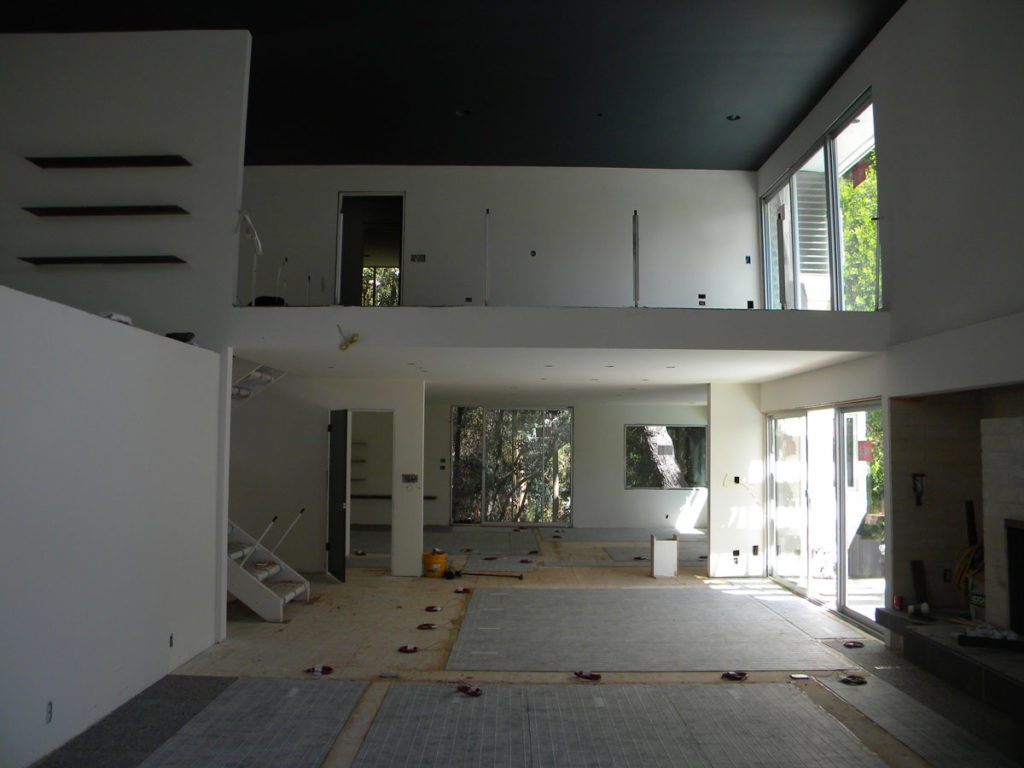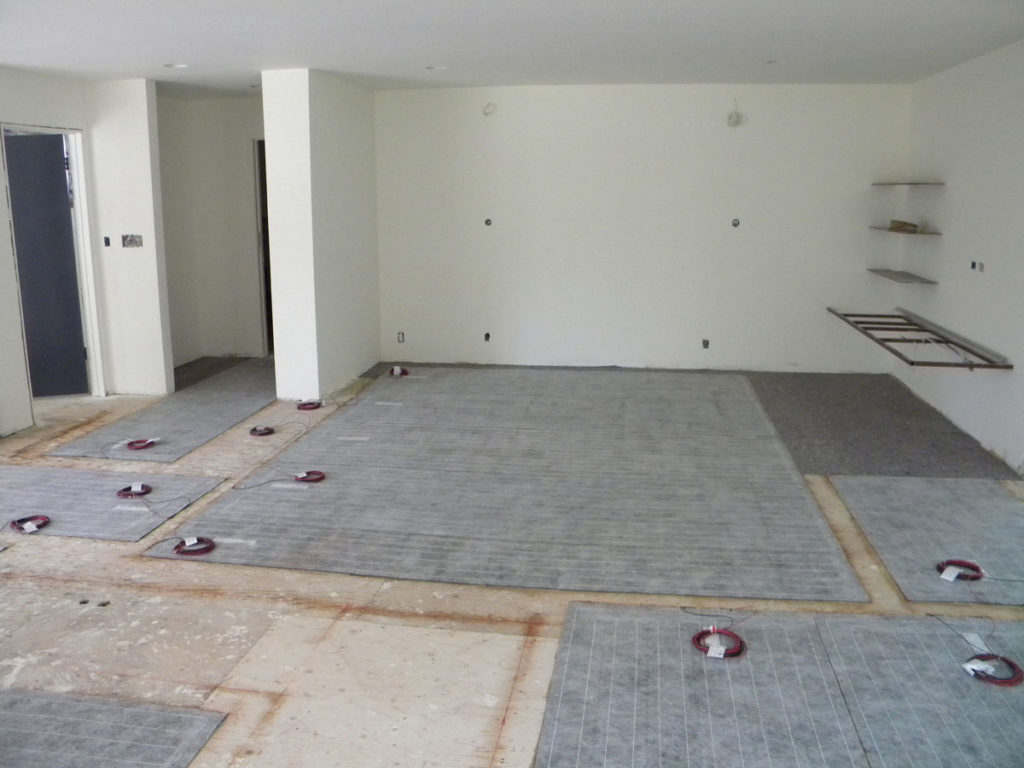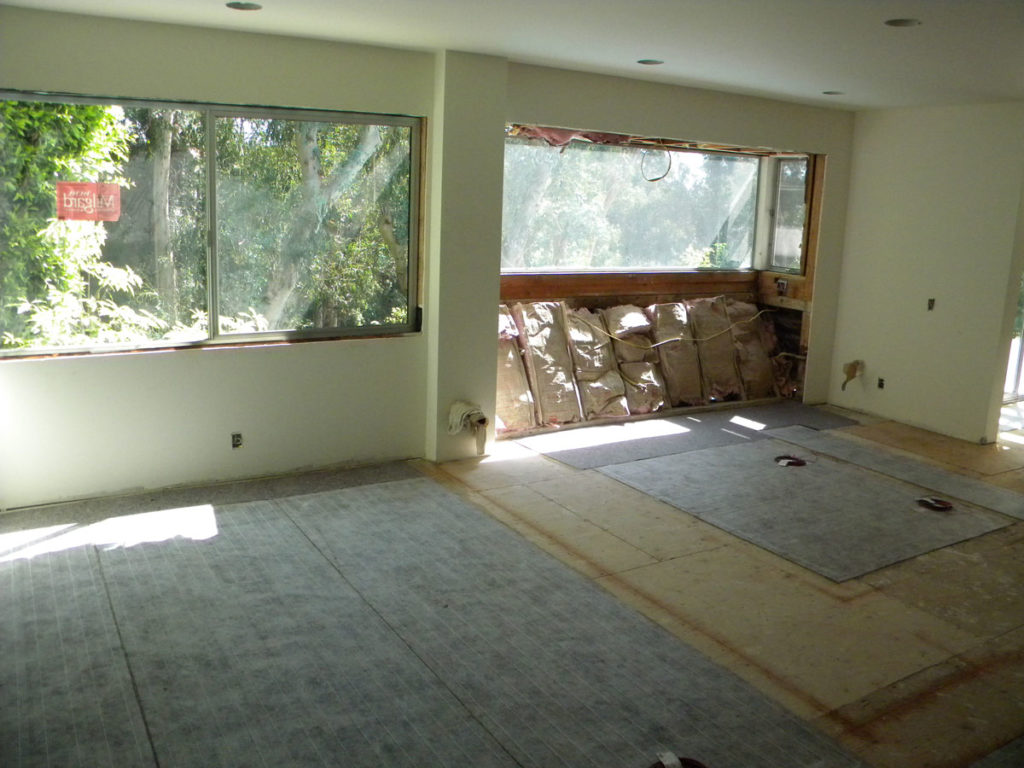Radiant floor heating is an excellent choice for renovations in Southern California. Many of the existing homes in and around Los Angeles were not originally built with heating or air conditioning. This means that no ductwork exists and when you’re doing a renovation, trying to figure out how and where to install ductwork has its challenges. Many times you can’t go through existing walls because it either changes the aesthetic of the architecture and, equally bad, it can’t be done because of structural concerns.
In these circumstances, in-floor, radiant heating is a wonderful solution. There are two common systems for radiant heating. They included an electrical system and a hydronic system. Both systems are installed under the finished flooring product, hence the name, in-floor radiant heating.
The electrical system requires a network of heating elements that are connected together using thin wire. The units themselves are like blankets with an interwoven ‘fabric’ of wiring. The sections lay flat. Electricity powers the entire system which can be zoned and managed through control panels installed in the various zones. These systems can also be connected to smart home management systems and run remotely. This system is less expensive, but it also has other benefits when doing a remodel. Namely, it has a lower profile and therefore can typically be installed without having to adjust door swings due to an increased floor height. The overall height is typically between 1/16 to 1/8 of an inch. We used the electrical system for the wholehouse remodel of the Kearsarge residence. The images in this article are from that project.



The hydronic (water) system is generally used in new construction projects. This is because you aren’t having to work with existing structure and can account for the extra buildup of the floor height. (As mentioned earlier, electrical systems have a lower profile than hydronic systems.) You must plan in advance is you are going to use a hydronic system or costly retro-fitting will be need to accommodate for the thicker profile. In a forced water, in-floor radiant floor system, water is heated and recirculated through plastic tubing. Hydronic systems can also be controlled by smart home management systems, however, zoning for different parts of the home can only be accomplished by having separate water heating systems and segregated tubing that feeds only a specific section.
When installing any in-floor system there are a few things to be mindful of. First, you need to be thoughtful about the room’s furniture placement. You would also do this same type of planning with a forced air system as you don’t want the vents to be blocked and the unit’s efficiency diminished. The same is true with the in-floor products. You should plan for furniture placement and not install the units directly under things like couches and large pieces of furniture. The same is true for planning where you will place cabinetry. You should also consider the type of furniture you will be using as you don’t want the heat that is radiating from the floor being caught under heavy units like armoires or TV cabinets or couches and beds with a lot of skirting. This can cause the units to malfunction and fail.
Until the finished flooring product is placed on top of either the electrical system or the hydronic system, the units can be fragile and must be protected. You don’t want to damage the units, so we try not to be doing heavy construction in other parts of the home when doing the installation. Care must also be taken during the installation of the top layer of flooring. For example, with the installation of wood flooring, you don’t want to send a nail through your newly installed plastic tubing.
Why Choose Radiant Floor Heating?
It is efficient and it works. I remember the first time we used in on a remodel project in Los Angeles and we were all shocked with how hot the room became once we turned it on and how quickly the room heated up. In-floor radiant heating is invisible–it doesn’t change the look or the design of the home. The systems are also great for occasional use. This is why we used the product in the construction of the Kearsarge Guest House. The heating is only needed when the guest house is being used, and when in use, we wanted the heating to work quickly.





